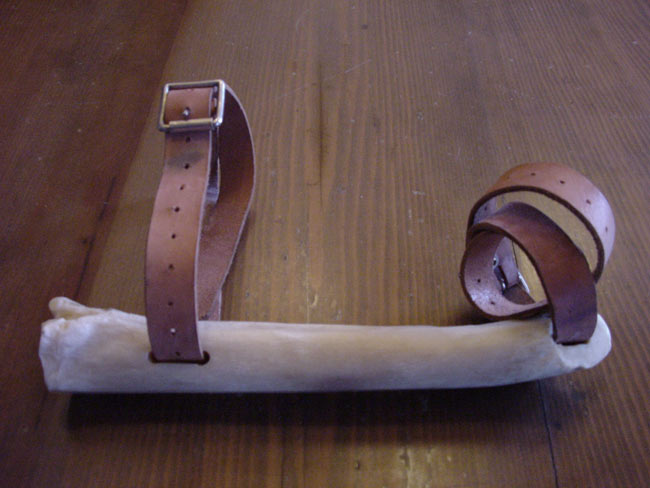The 5,000-Year-Old Origin of Ice Skating

Finns looking to cut back on travel time were the first to use ice skates about 5,000 years ago, a new study suggests.
The southern portion of Finland is the only place icy and flat enough to make traveling by skates – at that time made of animal bones – worth the energy, scientists discovered.
"We found this by measuring heart rate, oxygen consumption and speed of people skating on replicas of bone skates and by means of a computer simulation of several 10-kilometer [6.2 mile] journeys in five areas," said Federico Formenti, a human biomechanics specialist at the University of Oxford and co-author of the study.
In the winter, Finland's tight network of lakes forms the highest concentration of ice in the world, so it makes sense for the first brainstorm – "let's glide across the lake instead of walking around it!" – to have occurred there, Formenti said.
The study, written along with human locomotion expert Alberto E. Minetti at the University of Milan, is detailed in a recent edition of the Biological Journal of the Linnean Society of London.
Skates to survive
Surviving the bitter winters of northern Europe has always been a tough task, so skating was likely developed for practical purposes rather than leisure, Formenti said.
Sign up for the Live Science daily newsletter now
Get the world’s most fascinating discoveries delivered straight to your inbox.
Though many ancient pairs of the skates, usually made from the bones of horses, have been found across northern Europe, scientists were unsure where skaters first took to the ice.
To test the efficiency of ancient ice skating in different areas, Formenti strapped bone skates to several healthy volunteers on an Alpine lake and gathered their biometrics, then applied that data to the simulated geography of five countries: Finland, Norway, Sweden, the Netherlands and Germany.
"These countries were included in the study because of the high presence of water over the country and because several ancient bone skates were found there," Formenti told LiveScience.
Finland's geography meant an energy savings of up to 10 percent over the same journey done on foot, the researchers found. That meant individuals could cover a lot more ground in the waning winter light, Formenti said. In contrast, skating in other areas offered a savings of just 1 percent.
"An average figure of speed sustainable for a few hours on bone skates is about four or five kilometers per hour; if we think of a day during which there are about four hours of light, we can estimate that people could travel for about 20 kilometers per day [12.4 miles]. This means either a 20-kilometer one-way journey, or a 10-kilometer journey towards a destination and 10 kilometers to travel back home," he said.
No NHL
Ancient skaters looked nothing like NHL players or Olympic speed skaters, warned Formenti, who thinks that most ancient northern Europeans used wooden poles to push themselves, keeping their legs relatively straight.
The energy savings came from the reduced friction on the ice, often due to some residual animal fat left on the bone, not from powerful quad muscles speeding the individual along.
It wasn't until the 13th century that metal blades were developed and allowed the smooth skating stride that we recognize today, Formenti said.
- Skating Through Life and History?
- Video: Under Antarctic Ice
- Gallery: Glaciers Before and After











